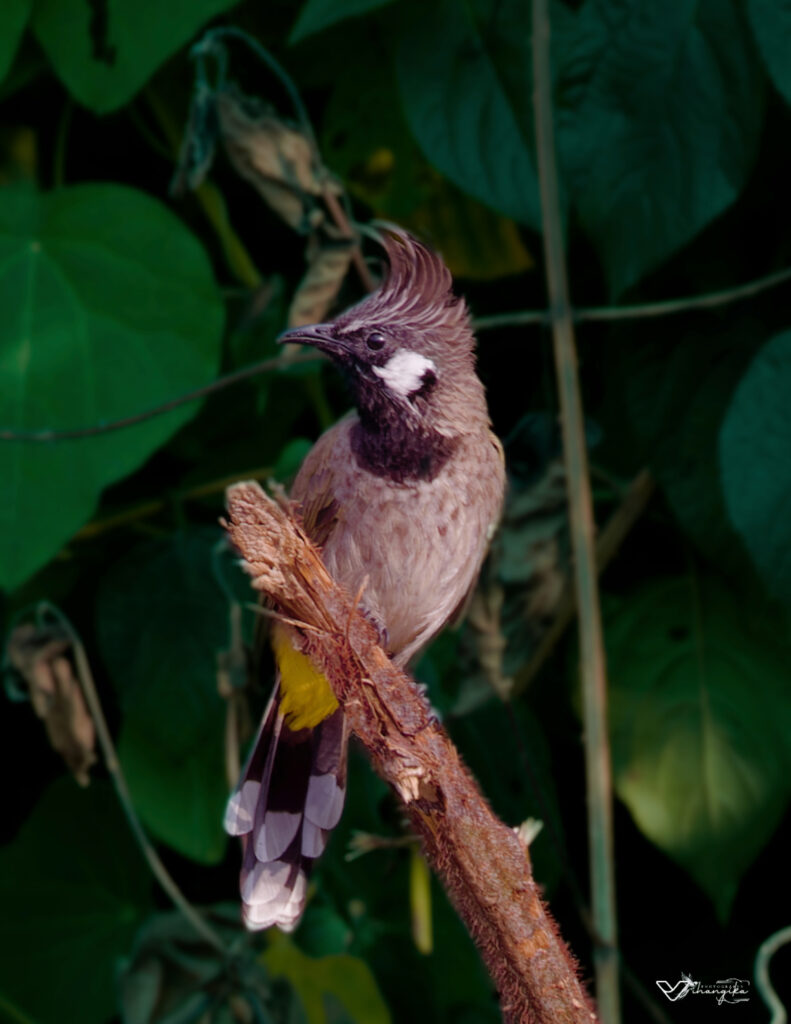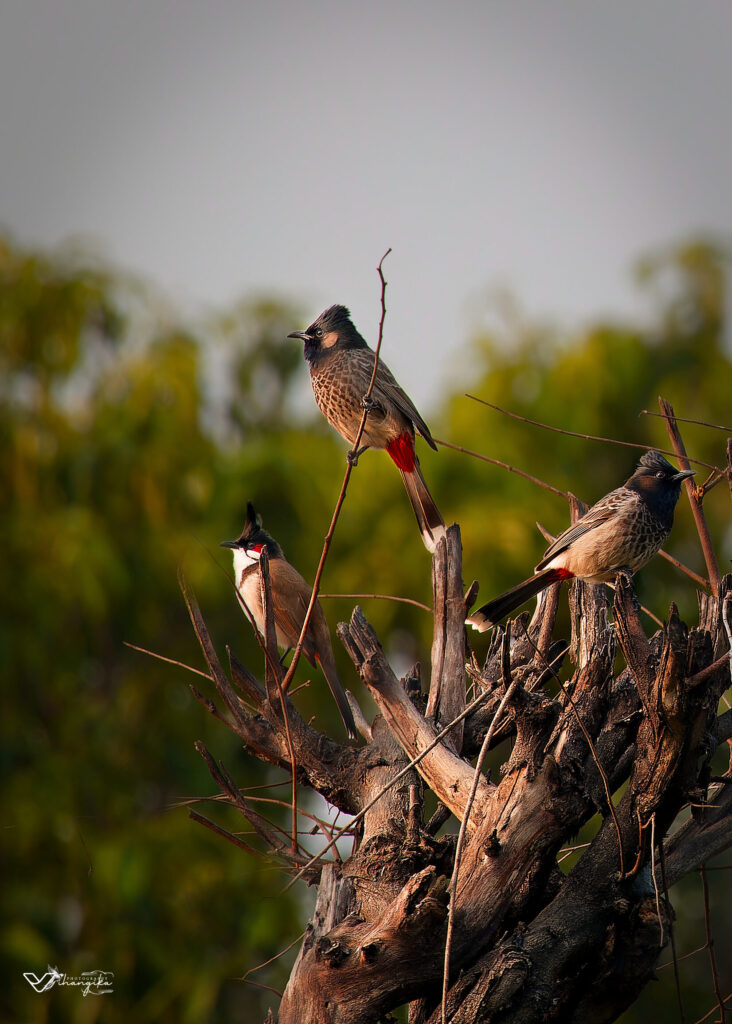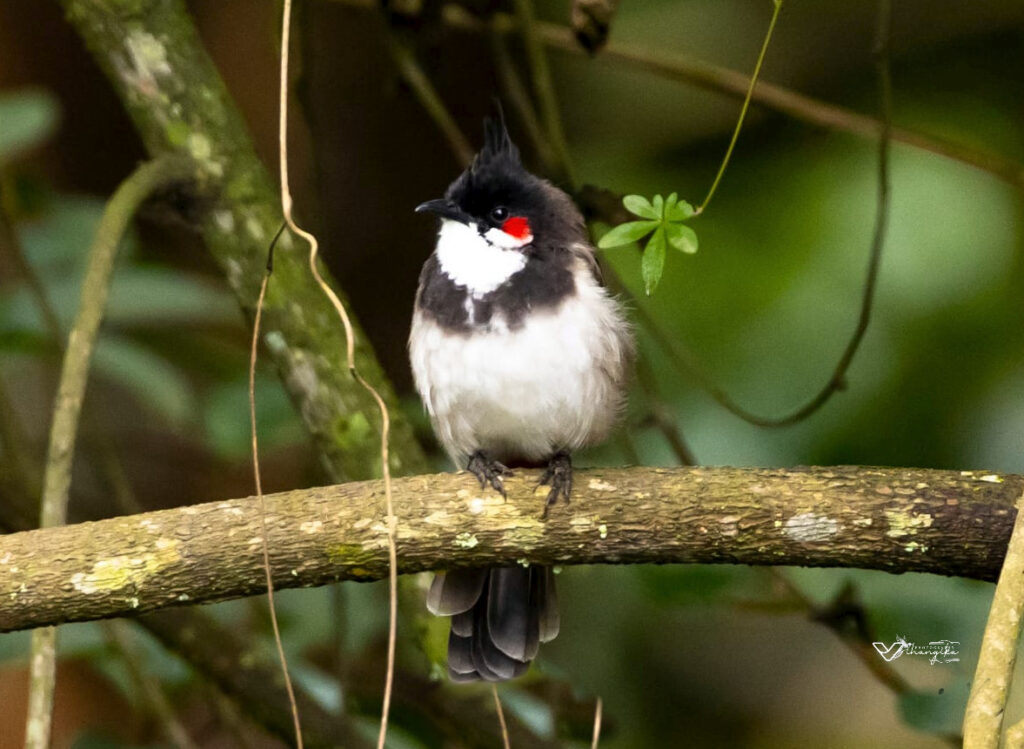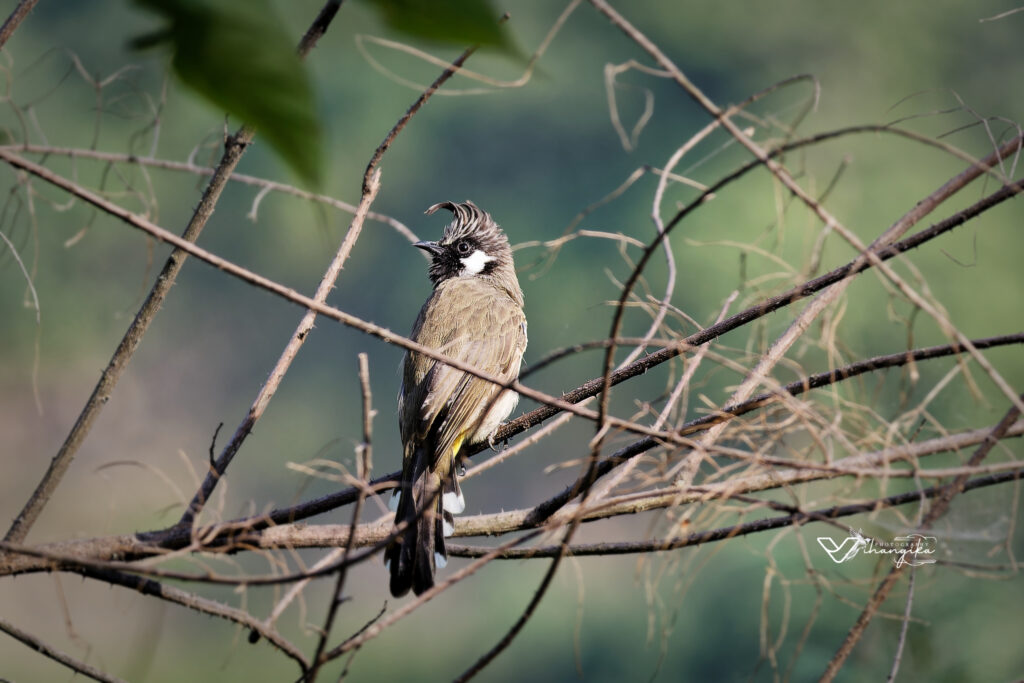Sometimes, the simplest things are the most complicated—only because we see them so often, we stop noticing them. It’s like that old saying, “ghar ki murgi daal barabar”. In the birding world, bulbuls fall into that category.We see them everywhere—on power lines, in gardens, chirping from tree branches—so often that they rarely make our hearts race the way a rare sighting might. They’re not particularly colorful either, especially when compared to peacocks, sunbirds, or even barbets. But here’s something many people don’t realize: India is home to some 23 species of bulbuls.

Since we’re in Uttarakhand, let’s narrow our focus. There are mainly nine types of bulbuls found in Uttarakhand:
| S. No. | Common Name | Scientific Name | IUCN Status |
| 1 | Ashy Bulbul | Hemixos flavala | Least Concern |
| 2 | Black-crested Bulbul | Pycnonotus flaviventris | Least Concern |
| 3 | Himalayan Black Bulbul | Hypsipetes leucocephalus | Least Concern |
| 4 | Himalayan Bulbul | Pycnonotus leucogenys | Least Concern |
| 5 | Mountain Bulbul | Ixos mcclellandii | Least Concern |
| 6 | Red-vented Bulbul | Pycnonotus cafer | Least Concern |
| 7 | Red-whiskered Bulbul | Pycnonotus jocosus | Least Concern |
| 8 | Striated Bulbul | Pycnonotus striatus | Least Concern |
| 9 | White-throated Bulbul | Alophoixus flaveolus | Least Concern |
Yes, all are listed as “Least Concern”—but are they really so common that they don’t deserve our attention? I doubt many of us have even seen more than a few of them, let alone observed them closely.
Even I have only spotted and photographed four types:
- Red-vented Bulbul
- Red-whiskered Bulbul
- Himalayan Bulbul
- Himalayan Black Bulbul
Initially, I didn’t even bother photographing them. I thought they weren’t “photogenic enough.” But photography, I’ve learned, is less about rarity and more about timing, composition, and the story behind the moment.
One day in kotabagh, as I was walking past a patch of scrubby bushes, a bare, leafless tree caught my eye. At first glance, it seemed ordinary—just another dry branch in the backdrop of green. But something made me stop. Birds were perched on its branches—not haphazardly, but in a way that felt oddly satisfying. I took a quick photograph, not expecting anything special.
Later, while going through my pictures, that image stopped me. There were three bulbuls—one Red-whiskered Bulbul and two Red-vented Bulbuls—perched with perfect spacing on the leafless branches. They looked like they knew how cool they appeared sitting that way. It wasn’t their color or rarity that made the shot beautiful—it was the symmetry.

That moment changed how I understood beauty. It’s not always about bright colors, striking patterns, or rare species. Sometimes, the most captivating thing is balance. What truly pleases the eye—and the mind—is symmetry, proportion, and harmony. It’s the silent rhythm of nature that gives everyday scenes their quiet magic.
Meet the Four Bulbuls I’ve seen so far in Uttarakhand
Here’s a little about each bulbul I’ve seen, their habits, and their homes

Red-whiskered Bulbul (Pycnonotus jocosus)
- Family: Pycnonotidae
- IUCN Status: Least Concern
- Size: Approximately 20 cm in length
- Wingspan: Data not specified
- Weight: 23–42 grams
- Habitat: Hill forests, urban gardens, and cultivated areas
- Distribution: Native to tropical Asia; introduced in various tropical regions worldwide
- Food Habits: Primarily frugivorous; also consumes insects
- Breeding Season: Varies by region; nests built in bushes or trees
- Etymology: “Pycnonotus” derives from Greek, meaning “thick back”; “jocosus” is Latin for “merry”

Himalayan Bulbul (Pycnonotus leucogenys)
- Family: Pycnonotidae
- IUCN Status: Least Concern
- Size: Approximately 18 cm in length
- Wingspan: 25–28 cm
- Weight: 34–38 grams
- Habitat: Hilly slopes, shrubberies, home gardens, and natural forests between 600–2,400 meters elevation
- Distribution: Central and South Asia, including the Himalayas
- Food Habits: Omnivorous; feeds on insects, berries, fruits, seeds, buds, and nectar
- Breeding Season: Data not specified
- Etymology: “Leucogenys” combines Greek “leukos” (white) and “genys” (cheek), referring to its white cheek

Black Bulbul (Hypsipetes leucocephalus)
- Family: Pycnonotidae
- IUCN Status: Least Concern
- Size: 24–25 cm in length
- Wingspan: Data not specified
- Weight: Data not specified
- Habitat: Broad-leaved forests, cultivation areas, and gardens, mainly in hilly regions
- Distribution: Himalayas, from Pakistan eastward to Southeast Asia
- Food Habits: Feeds on seeds, insects, berries, and nectar
- Breeding Season: Data not specified
- Etymology: “Leucocephalus” is derived from Greek, meaning “white head,”
Red-vented Bulbul (Pycnonotus cafer)
- Family: Pycnonotidae
- IUCN Status: Least Concern
- Size: Approximately 20 cm in length
- Wingspan: Data not specified
- Weight: Data not specified
- Habitat: Urban areas, gardens, and forest edges
- Distribution: Native to the Indian subcontinent; introduced to various regions including Hawaii and Fiji
- Food Habits: Omnivorous; consumes fruits, petals, nectar, insects, and occasionally small vertebrates
- Breeding Season: Typically from June to September; nests built in bushes or trees
- Etymology: “Cafer” refers to the Cape of Good Hope region in South Africa, indicating its historical association
